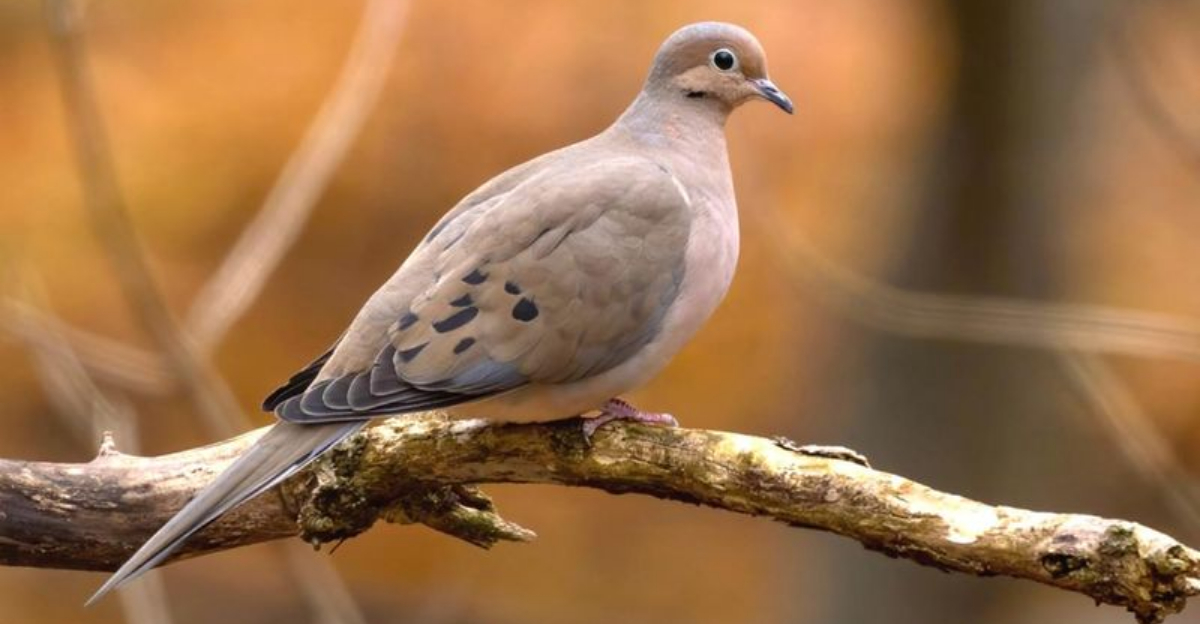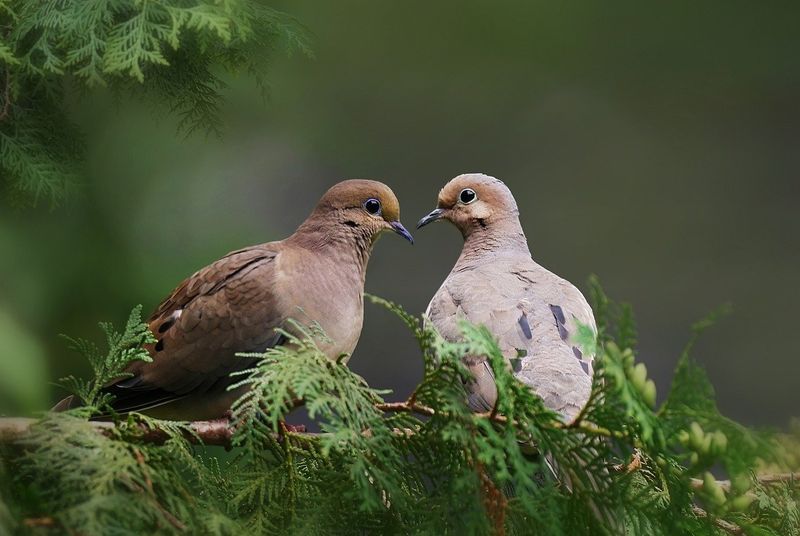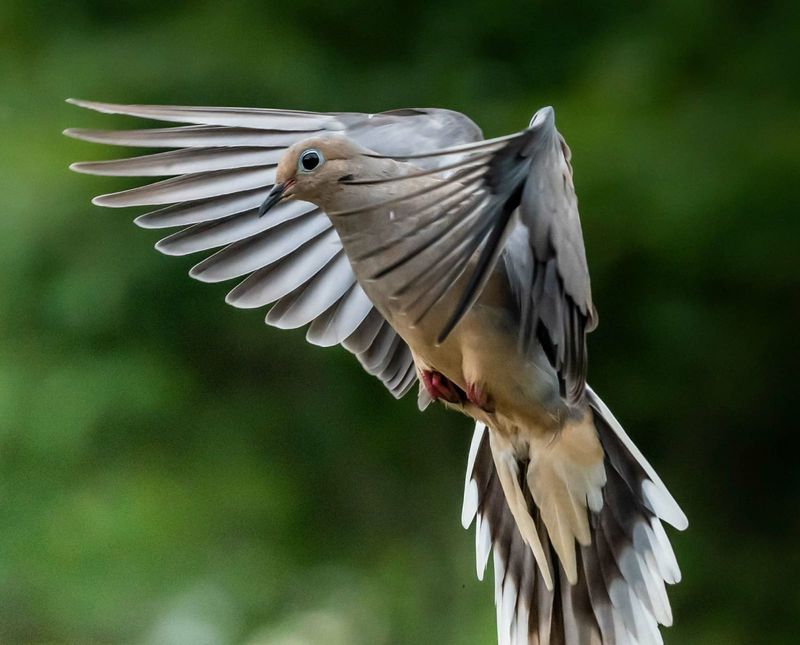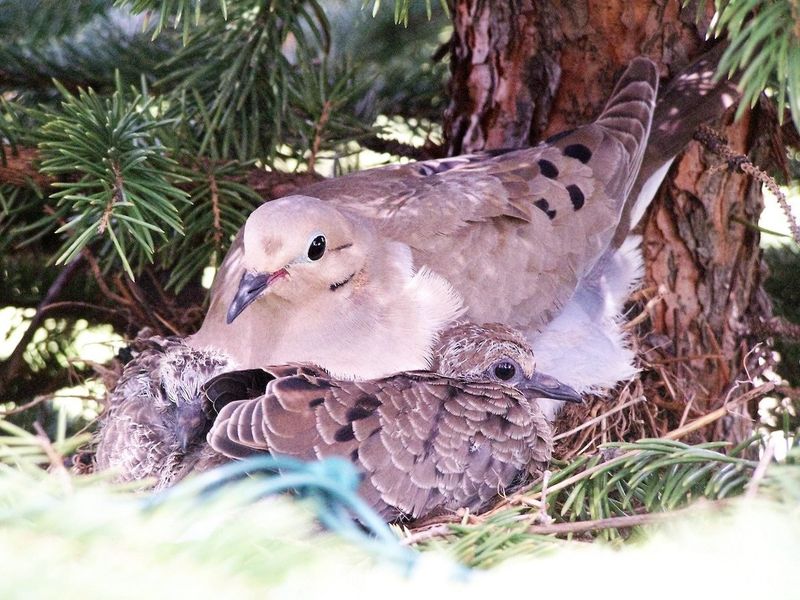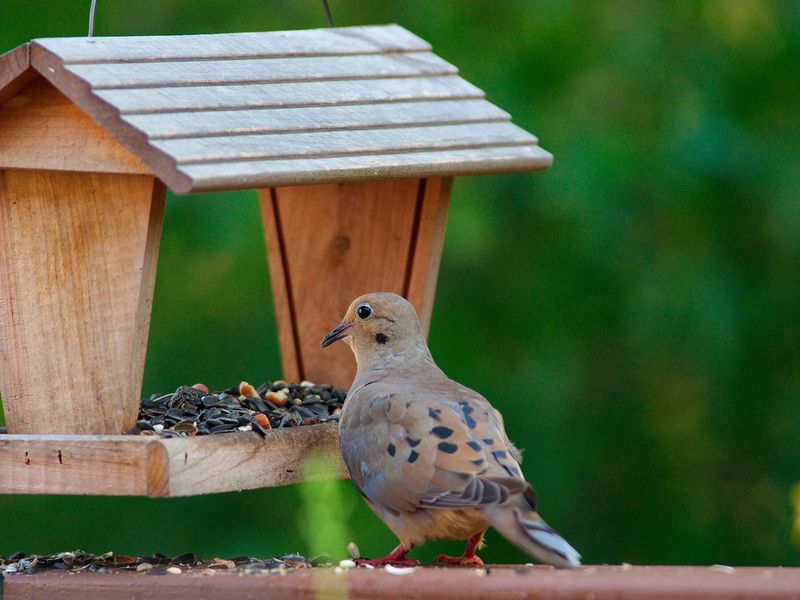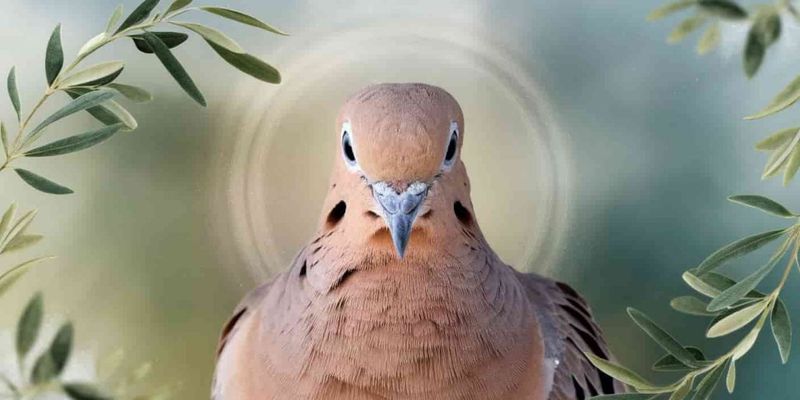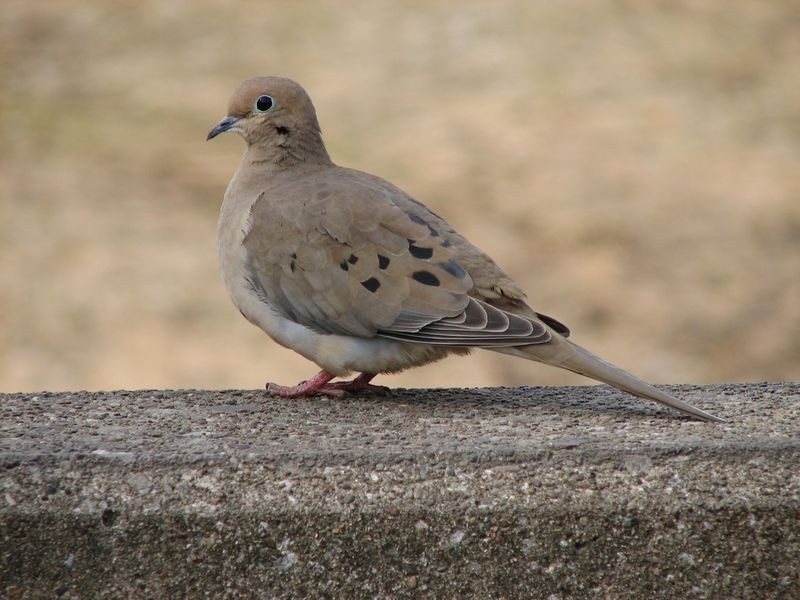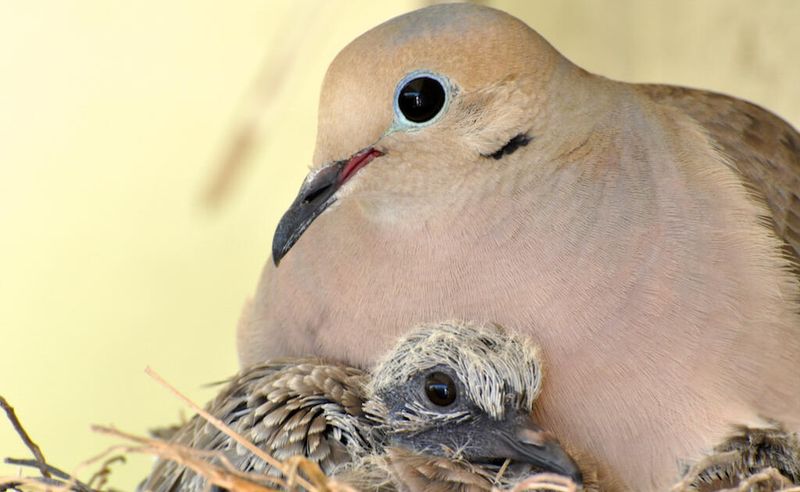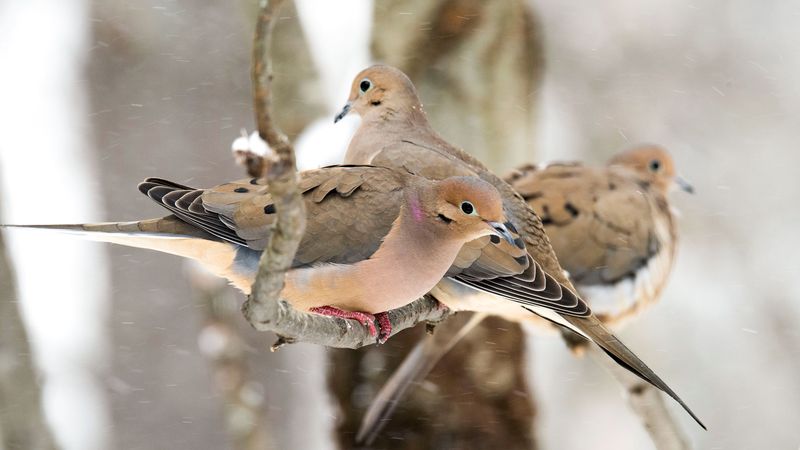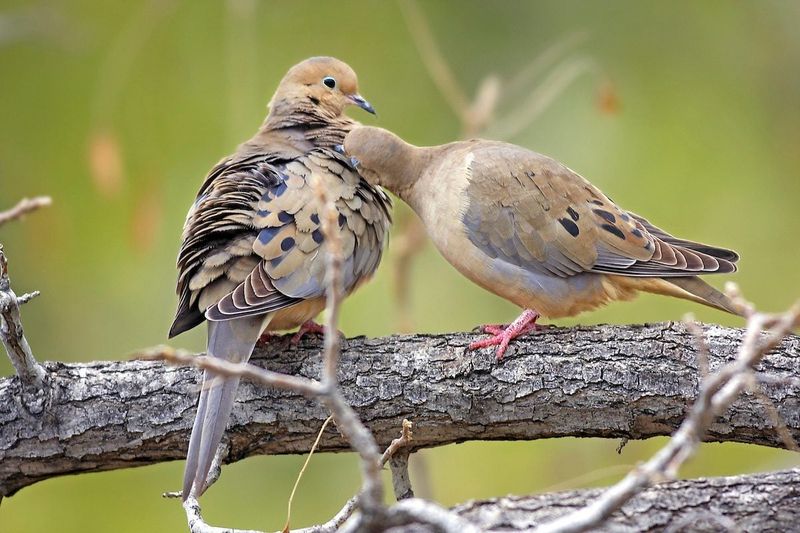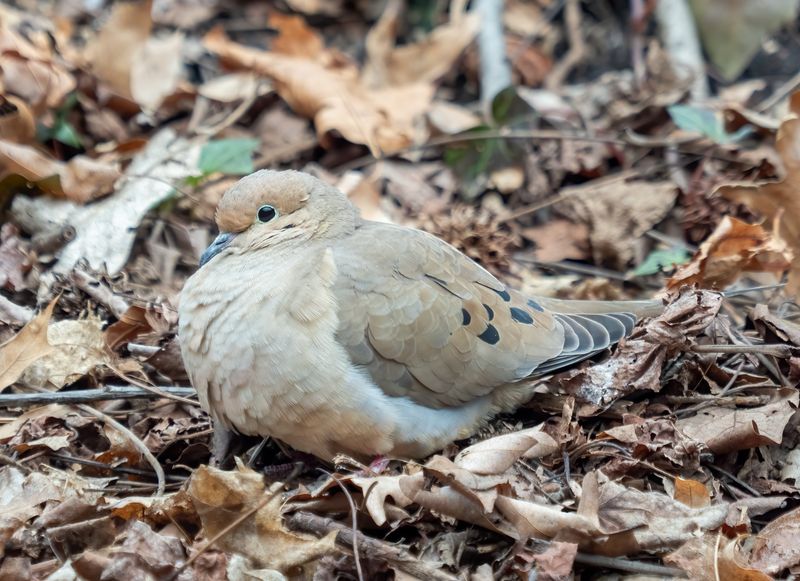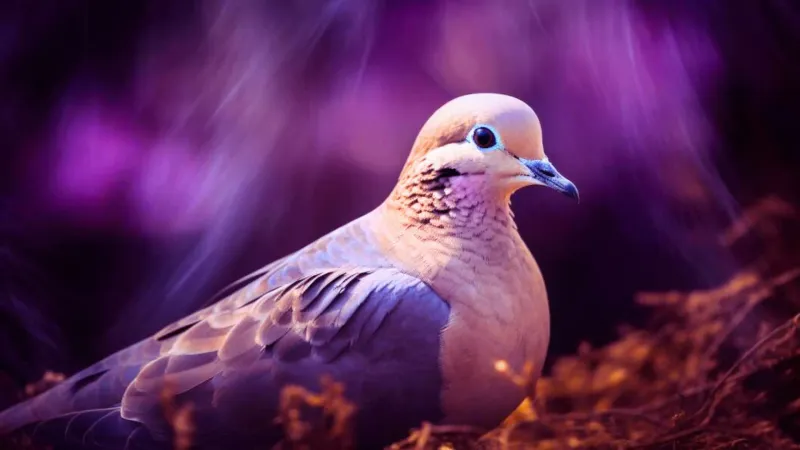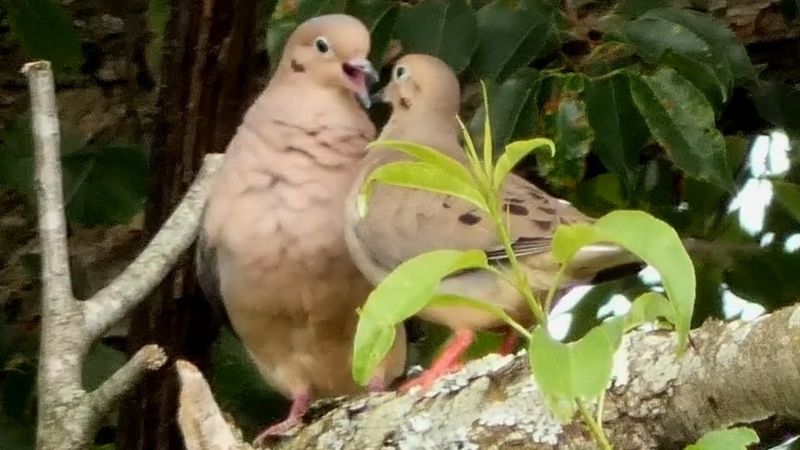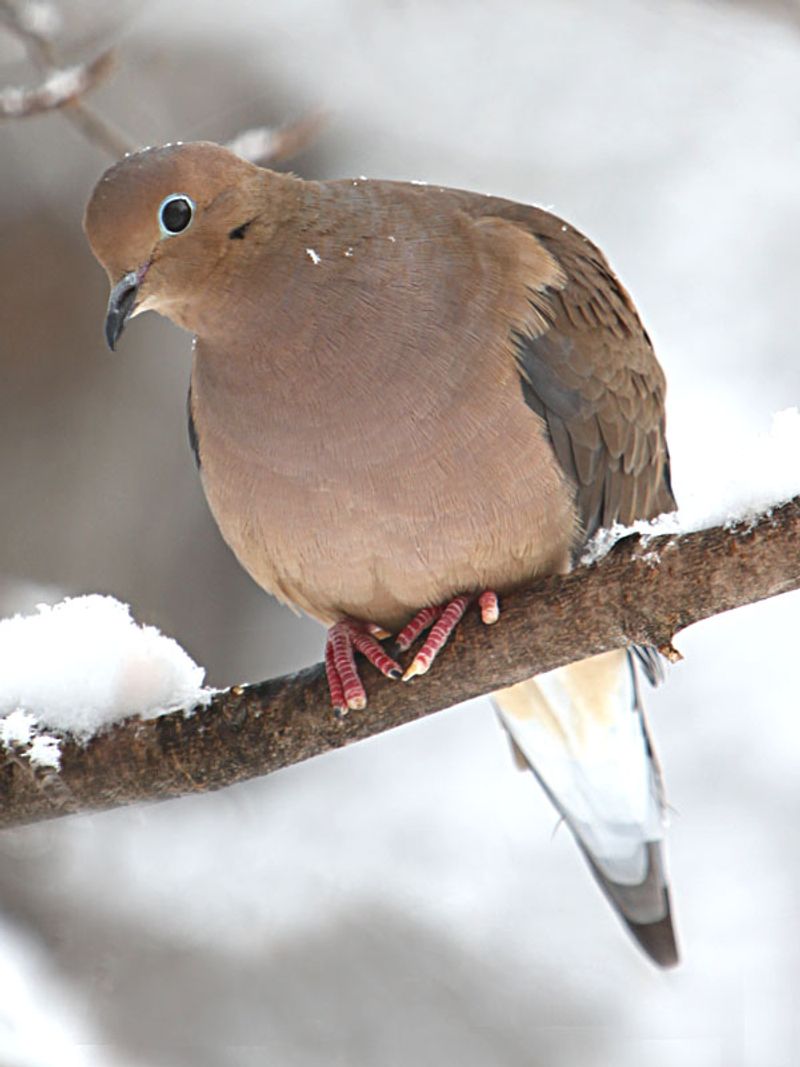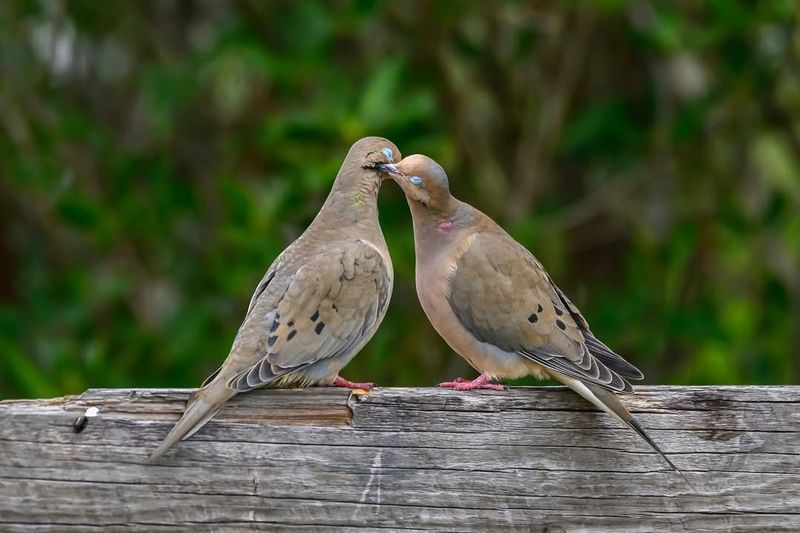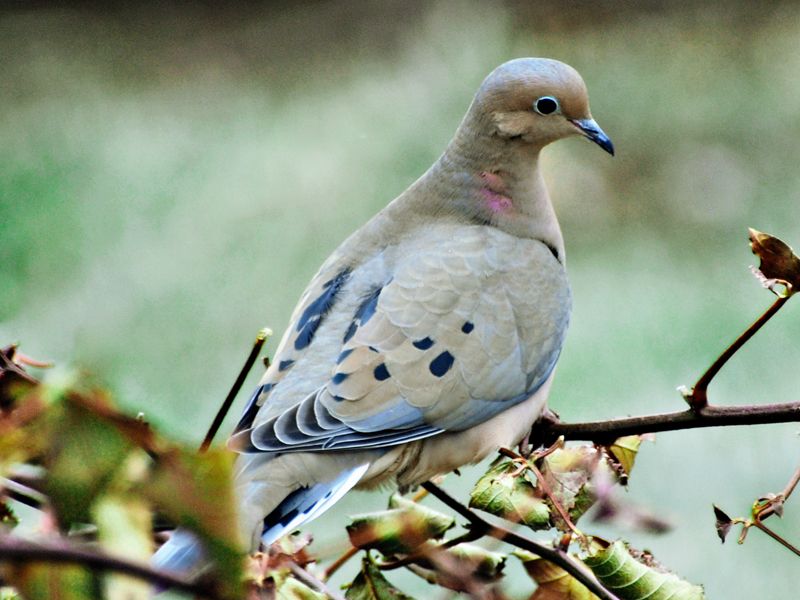Mourning doves are more than just a common sight in our backyards; these gentle birds are full of surprises. With their soft cooing and graceful flight, they captivate bird enthusiasts and casual observers alike.
From their unique behaviors to their intriguing history, mourning doves hold a treasure trove of fascinating facts that often go unnoticed. Let’s explore 15 amazing facts about these intriguing avian creatures that are sure to surprise and delight you.
1. The Gentle Coo of Mourning Doves
Mourning doves are renowned for their distinctive, gentle cooing. This soothing sound is often heard during the quiet hours of dawn and dusk, setting a serene atmosphere in gardens and parks.
The coo is not just a song; it’s a communication tool used to attract mates and establish territories. Interestingly, both male and female mourning doves take part in this melodic conversation, adding a harmonious touch to their environment.
Their cooing can evoke a sense of calm and reflection, making them beloved companions to those who enjoy the tranquil moments of early morning.
2. Speedy Flyers of the Bird World
Did you know mourning doves are among the fastest birds in North America? These sleek flyers can reach speeds of up to 55 miles per hour, allowing them to swiftly escape predators.
Their aerodynamic bodies and strong wing muscles enable them to perform agile maneuvers in the air. This impressive flying capability is not just for evasion; it also helps them cover long distances during migration.
Mourning doves embark on extensive journeys across the continent, showcasing their endurance and navigational skills. Their flight is a blend of power and grace, captivating those who witness it.
3. Prolific Nest Builders
Mourning doves are dedicated nest builders, often constructing their nests in trees, shrubs, or even on man-made structures. Using twigs, grass, and other natural materials, they fashion a simple yet sturdy platform for raising their young.
Both parents take part in building the nest and caring for their chicks, showcasing a strong partnership. Mourning doves are known for their prolific breeding habits, raising multiple broods each year.
This reproductive strategy ensures their survival and contributes to their widespread presence. Observing a mourning dove nest can be a heartwarming experience, revealing the bird’s nurturing side.
4. Unique Feeding Habits
Mourning doves have a unique way of feeding that sets them apart from other birds. They primarily eat seeds, which they pick up with their beaks while walking on the ground.
Interestingly, mourning doves are one of the few bird species that can drink water by sucking it up using their beaks, rather than tilting their heads back.
This adaptation allows them to hydrate quickly and efficiently, a valuable trait in their often arid habitats. Watching these birds feed and drink is a delightful sight, as they interact with their environment in such an elegant manner.
5. The Symbol of Peace
Throughout history, mourning doves have been symbols of peace and tranquility. Their gentle demeanor and soft cooing evoke feelings of calm and harmony, making them a favorite in art and literature.
The image of a dove holding an olive branch is a well-known symbol of peace, and mourning doves often embody this imagery in real life. Their presence can transform a chaotic scene into a serene landscape, inspiring hope and unity.
As symbols of peace, they remind us of the beauty in simplicity and the power of quiet strength. Their grace is a timeless message of harmony.
6. Adaptable Urban Dwellers
Mourning doves have demonstrated remarkable adaptability, thriving in urban environments where many other bird species struggle. They are often seen perched on buildings, fences, and power lines, finding suitable habitats amidst human activity.
Their ability to coexist with people shows their resilience and resourcefulness. These birds have learned to exploit urban gardens and parks for food and nesting sites, ensuring their survival in diverse settings.
This adaptability makes mourning doves accessible to urban dwellers, offering a glimpse of nature’s wonders in the heart of the city. Their presence adds a touch of nature to urban landscapes.
7. The Gentle Parent
Mourning doves are devoted parents, known for their tender care of their young. Both male and female doves take turns incubating the eggs and feeding the chicks with ‘crop milk,’ a nutrient-rich secretion produced by both parents.
This milk provides essential nutrients for the growing chicks, ensuring their healthy development. The sight of a parent dove gently feeding its chick is a touching testament to their nurturing instincts.
Their commitment to their offspring highlights the strong family bonds that are a hallmark of these gentle birds. Observing this behavior evokes admiration for their parental dedication.
8. Migration Marvels
Mourning doves embark on remarkable migrations, traveling thousands of miles between their breeding and wintering grounds. These journeys, stretching from Canada to Central America, are a testament to their endurance and navigational expertise.
Mourning doves navigate using the Earth’s magnetic fields and visual landmarks, ensuring they reach their destinations safely. This migratory behavior allows them to exploit seasonal resources, contributing to their widespread distribution.
Watching a flock of mourning doves take to the sky is a breathtaking sight, as they move in unison with a rhythm that reflects the cycles of nature.
9. Surprising Lifespan
Contrary to popular belief, mourning doves can have surprisingly long lifespans in the wild, often living up to five years or more. Their longevity is attributed to their adaptability, careful breeding strategies, and ability to evade predators.
In captivity, their life expectancy can extend even further, sometimes reaching 15 years. This extended lifespan allows them to play a significant role in their ecosystems, contributing to seed dispersal and maintaining balanced populations.
Observing an older mourning dove can be inspiring, as it reflects resilience and adaptability in the face of life’s challenges.
10. A Feathered Camouflage
Mourning doves possess a feathered camouflage that perfectly blends them into their surroundings. Their soft, brownish-gray plumage mimics the colors of tree bark, leaves, and the dusty ground, offering them protection from predators.
This natural camouflage is essential for their survival, especially when nesting or foraging on the ground. It allows them to remain unseen, even in plain sight, highlighting the beauty of nature’s adaptations.
Observing a mourning dove disappear into its environment can be awe-inspiring, revealing the subtle artistry of their coloration. Their feathered disguise is a masterclass in survival.
11. Cultural Significance
Mourning doves hold cultural significance in various traditions and mythologies. In Native American cultures, they are often seen as symbols of peace, love, and renewal.
Their presence in stories and rituals underscores their importance as messengers of hope and harmony. Mourning doves appear in various cultures around the world, often associated with love and fidelity due to their monogamous nature.
Their cultural roles reflect the universal admiration for their gentle demeanor and melodic cooing. By understanding their symbolic meanings, we gain insight into the timeless connections between people and nature.
12. Vocal Communication
Mourning doves use vocal communication to strengthen social bonds and coordinate activities. Their repertoire includes coos, whistles, and wing whistles, each serving a specific function in their daily lives.
These sounds convey messages to mates, ward off rivals, and signal alarm. The ability to communicate vocally is crucial for maintaining their social structure and ensuring reproductive success.
Observing a mourning dove engaged in vocal exchanges reveals the intricate language of these birds. Their vocal abilities add depth to their interactions and enrich the avian symphony of their habitats.
13. A Diet Rich in Seeds
Mourning doves are primarily granivorous, with a diet rich in seeds from a variety of plants. They consume grains, wild grasses, and even cultivated crops, playing an important role in seed dispersal.
This dietary preference helps control weed populations and supports agricultural ecosystems. Their foraging behavior is a fascinating spectacle, as they skillfully pick seeds from the ground or pluck them from plants.
By understanding their dietary habits, we appreciate their contribution to ecological balance and biodiversity. Their seed-rich diet is a cornerstone of their existence, supporting their energy needs and reproductive success.
14. Elegant Courtship Rituals
The courtship rituals of mourning doves are a graceful display of affection and bonding. During the breeding season, males perform elaborate dances and wing displays to attract females.
These rituals include soft cooing and gentle nuzzling, establishing strong pair bonds that often last for life. The romantic interactions of mourning doves create a captivating spectacle, reflecting their commitment and devotion.
By observing these courtship behaviors, we witness the tender connections that define their relationships. Their elegant displays are a testament to the enduring power of love and partnership in the natural world.
15. Resilient Survivors
Mourning doves are resilient survivors, capable of withstanding harsh environmental conditions. Their adaptability and resourcefulness enable them to thrive in diverse habitats, from deserts to woodlands.
Despite facing threats from predators and habitat loss, they maintain stable populations through strategic breeding and migration. Their resilience is a testament to nature’s ability to adapt and endure.
Observing a mourning dove surviving against the odds is an inspiring reminder of the strength inherent in all living creatures. Their continued presence amidst challenges highlights their perseverance and the enduring beauty of life.
